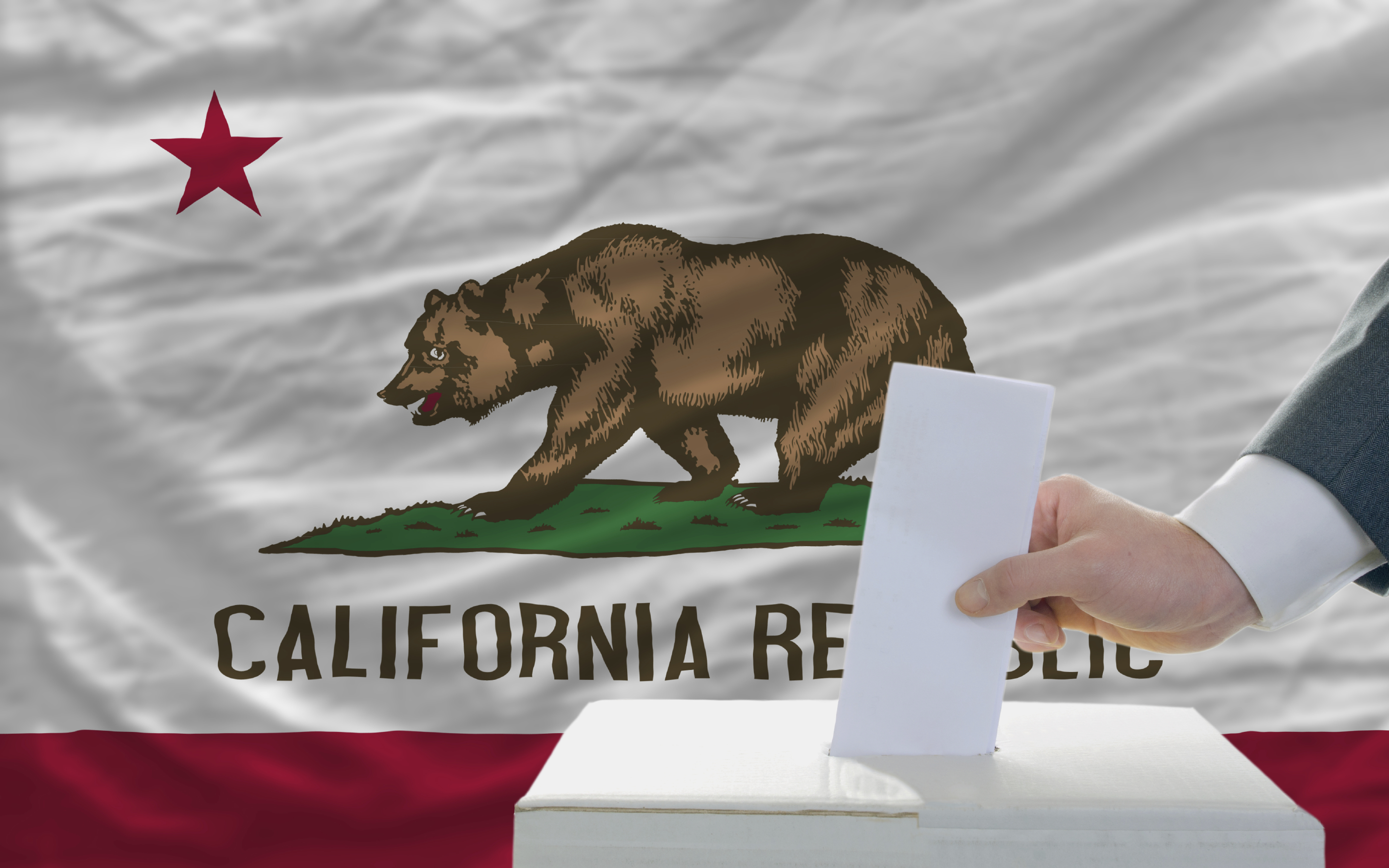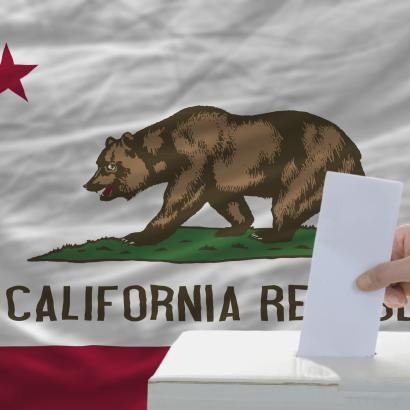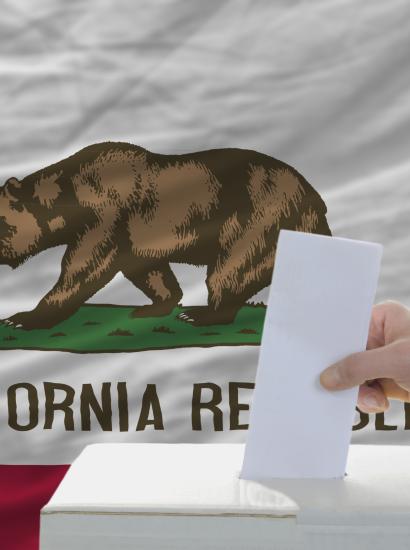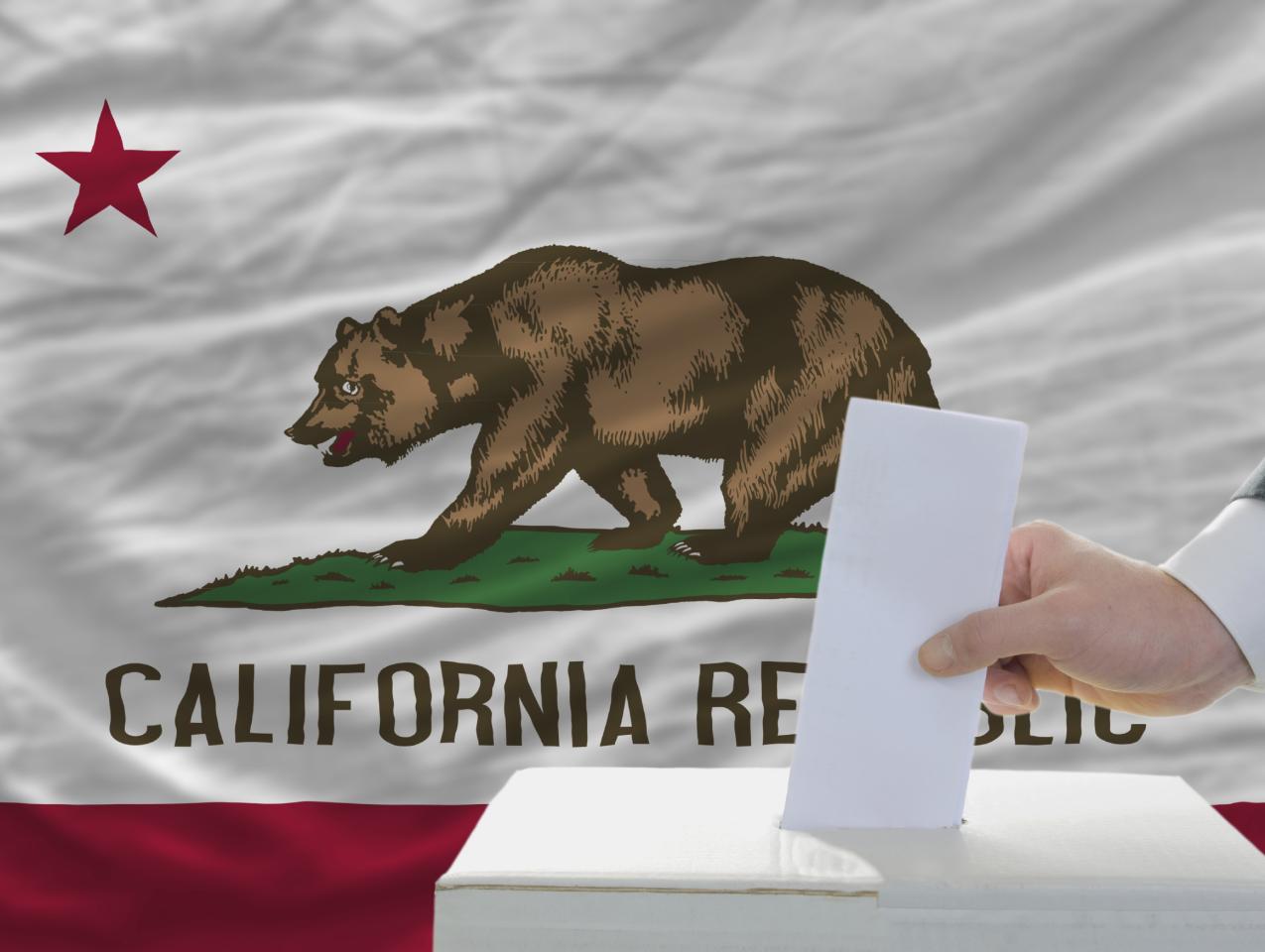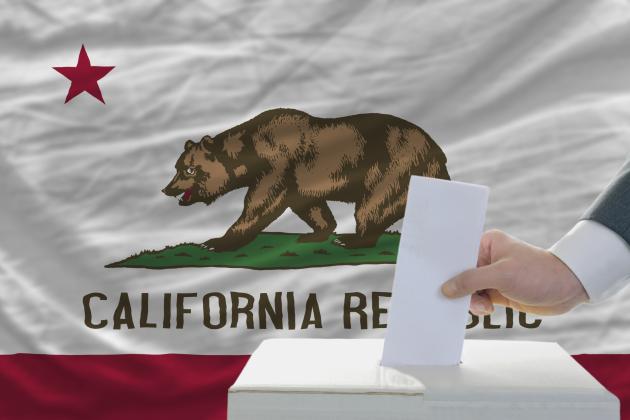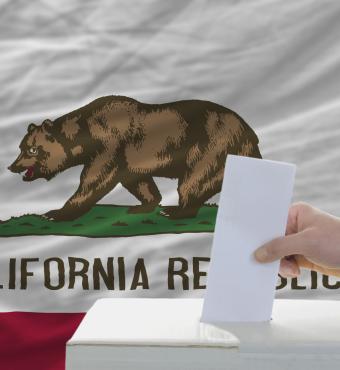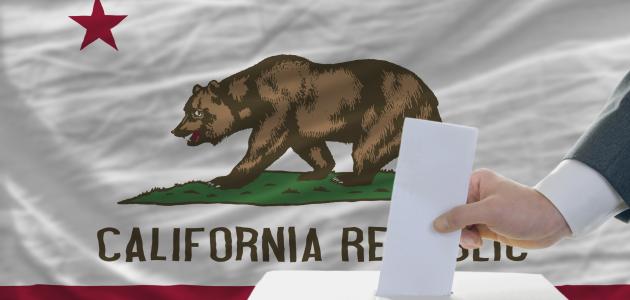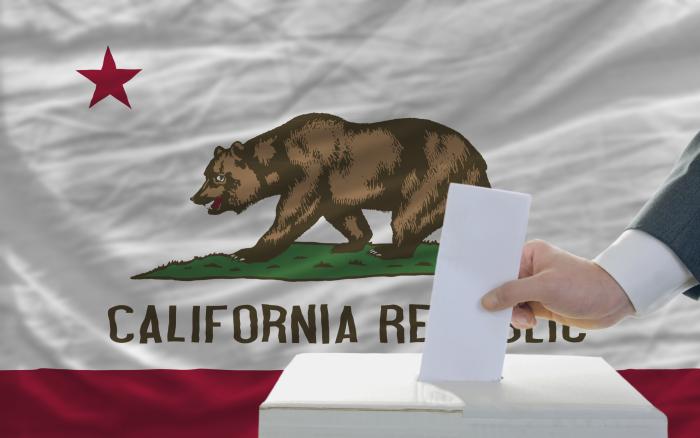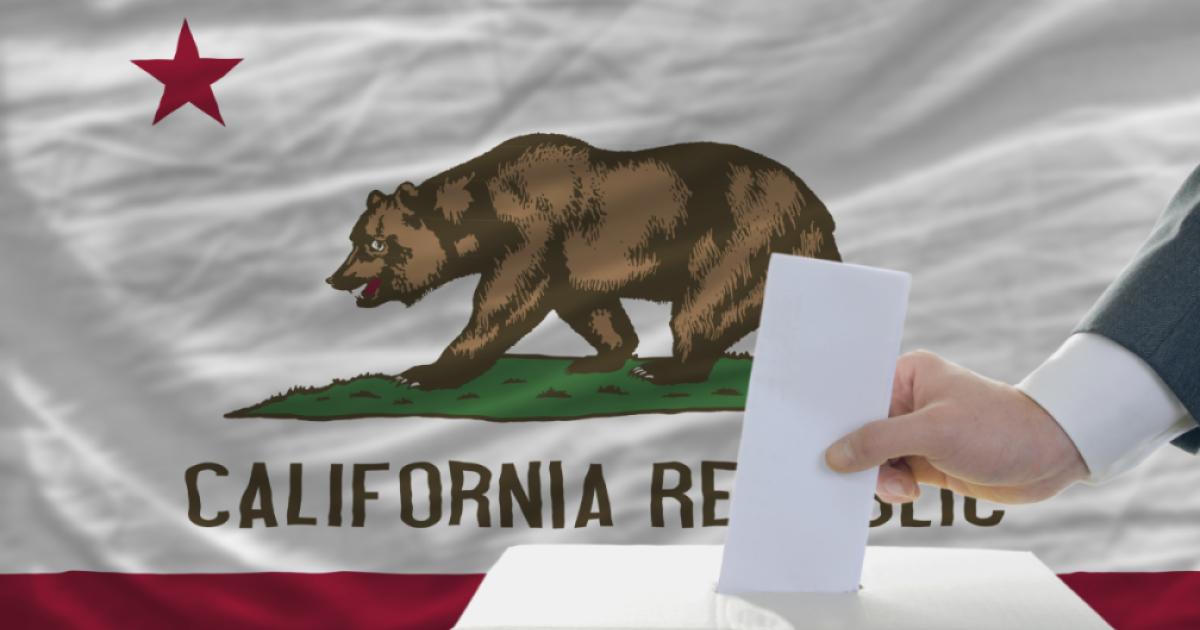- Politics, Institutions, and Public Opinion
- Campaigns & Elections
- State & Local
- California
Ordinarily, my writing appears in this space mid to late in the week. But a Tuesday election—and the uncertainty that may come as California’s vote tally vacillates in the days (and weeks) after—leads me to believe that the safer approach is to concentrate on pre–Election Day California.
A few thoughts:
The Numbers Game. Donald Trump won’t win California and its 55 electoral votes. He won’t even come close, considering that he barely topped 30% in the November 2016 general election—a losing margin of nearly 4.27 million votes (nationally, Trump trailed Hillary Clinton by nearly 2.87 million votes). One recent poll suggests Trump may in store for a California loss of historic proportions.
As Election Day draws, Trump’s reelection chances rest in part on the registration of new Republican voters in battleground states, with the GOP outperforming Democrats in Arizona, Florida, and Pennsylvania.
That’s not the case in California.
Per the most recent pre-election report issued by California’s secretary of state (60 days before Election Day), the Golden State is home to 21.24 million registered voters. Democrats account for 46.4% of that sum; Republicans 24.2%; No Party Preference (NPP) 23.7%.
And four years ago? In September 2016, California held 18.25 million registered voters—45.2% Democrats; 26.8% Republican; 23.4% No Party Preference.
Now, let’s put this in more human terms.
Over the last four years, Republicans have added more than 243,000 voters, versus more than 771,000 for the NPP side of the ledger and—brace yourself—a little more than 1.61 million new Democrats (there are now nearly 10 million registered Democrats in California to only 5.1 million registered Republicans).
The net gain in registration is “progress” for California Republicans, if you can call it that, given that GOP registration fell in the previous two four-year cycles (down 30,000 voters 2008–12; down more than 308,000 voters 2012–16). But that progress comes at a price: enthused Democrats whose sheer numbers potentially overwhelm those of Republicans in statewide contests.
An interesting side note: George W. Bush was not a terribly popular entity in California, twice losing the state by wide margins. But in 2004, the year of Bush’s successful reelection run, here’s how California’s voter registration broke down: for Republicans, a net gain of 179,000 voters from the previous presidential contest; for Democrats, a net loss of more than 133,600 voters (but still an overall registration edge of over eight points).
The bottom line: California has nearly three million more registered voters than it did at this time four years ago. Yet California Republicans earned only an 8% slice of that pie, versus nearly 54% that went Democratic and nearly 26% that opted for NPP. To the extent that Trump’s hostile attitude toward California is to blame for this will keep political scientists occupied for years to come.
Does Turnout Lead to Turned Out? Assuming both raw numbers and raw emotion are on the Democrats’ side this week, who stands to suffer?
A good place to look might be Orange County and California’s 37th State Senate District, where Republican incumbent John Moorlach is seeking a second four-year term.
Moorlach is a serious policy wonk (back in the 1990s he sounded the alarm with regard to the OC’s bankruptcy) who also thinks outside the box (check out his Hoover Eureka column suggesting the construction of a north-south California autobahn). Those are rare commodities in California’s term-limited, creativity-limited state legislature.
Yet the senator finds himself in a fight for his political survival. The once reliably Republican district is now almost evenly divided (35.33% registered Republican; 35.04% registered Democrat). Four years ago, in the same district, the GOP edge in registration surpassed eight points (39.42% to 30.95%).
Again, let’s put this in more human terms.
Over the last four years, Republican registration in the 37th SD is down by just over 3,600 voters. Meanwhile, Democratic registration has spiked by 40,000 voters. The significance of those numbers: Moorlach won his 2016 race by a margin of 56,000 votes. A net shift of 43,00 votes, as reflected by the adjusted registration numbers, leaves him with a margin of 13,000 votes—in 2016’s State Senate race, a difference of less than 3%.
Which doesn’t leave a Republican candidate much room for error—or breathing.
Stepping On—Or Over—the “Third Rail.” California’s Proposition 13 has been on the books for over four decades—voters approving the ballot measure in California’s June 1978 primary.
For nearly as long, scribes and pundits have called Prop 13 “the third rail of California politics”—the idea being that any lawmaker who fiddles with the measure’s imposed limits on commercial and residential property assessments is cruising for a bruising from an electorate that cares not for its taxes going up.
This year’s Proposition 15, a so-called “split-roll’ approach that addresses the commercial side of Prop 13 but not residential properties, puts that notion to a test.
Polling in California is scant (a casualty, one supposes, of the Golden State not factoring much into the national election). However, this UC-Berkeley Institute of Government Studies survey, released just last week, shows Prop 15 enjoying only 49% support—calling to mind an unwritten rule of California politics that ballot initiatives go down, not up; measures polling at or below 50% heading into Election Day tend to lose.
What would Prop 15’s defeat mean to Sacramento’s ruling class? For openers, a lot less money (according to California’s legislative analyst, “Beginning in 2025, total property taxes from commercial land and buildings probably would be $8 billion to $12.5 billion higher in most years”).
And for Democratic strategists who for years have been plotting an assault on Prop 13: back to the drawing board.
The “Wedge” Salad. Speaking of arguably tired adages, this year’s Proposition 16 takes us to the question of whether “wedge issues”—a term used frequently in the California of the 1990s—are still a potent force in Golden State politics.
What’s a wedge issue? Any policy issue that rends a demographic or voting bloc. In the 1990s, for Republicans and conservatives, that included welfare reform, immigration reform, criminal justice, and in Prop 16’s case affirmative action (curiously, perhaps tellingly, the media rarely suggest there’s such a thing as “liberal wedge issues”).
In 1996, California voters lent their approval to Proposition 209, which banned to use of racial quotas in government hiring and admission to California’s public universities. If the aforementioned UC-Berkeley IGS poll is correct (it has Prop 16 enjoying only 38% support), then California apparently hasn’t changed its mind on this particular ”wedge” issue (the “no” vote on Prop 209—i.e., a vote in favor of continuing affirmative action in higher ed and government hiring—was just 45.45% back in 1996).
What does this say about the California of 2020? Maybe that the blaring presence of Donald Trump dominating news cycles drowns out other woke concerns. Or, in a state experiencing a different kind of social upheaval than in the 1990s—a pandemic and its many tribulations and inconveniences—it’s difficult to light a non-Trump fire under California voters.
Driving Home a Point. While we’re looking at the initiative side of the California ballot, there’s also an open question as to the fate of Proposition 22, which amends a much-reviled California law (2019’s Assembly Bill 5) by classifying app-based rideshare and delivery drivers as independent contractors and not employees.
Again, the UC-Berkeley IGS poll—and, again, trouble for an initiative’s proponents: the survey showed Prop 22 with only 46% support (and 12% of respondents undecided).
That tepid support is not for a lack of trying to win over California voters. The pro side of Prop 22 has funneled almost $200 million into its coffers by way of gig companies (as of early October, that included $50 million from Uber, $48 million from Lyft, $47 million from DoorDash, $28 million from InstaCart, and $11 million from Postmates).
That, in turn, has meant an onslaught of television advertising (not to mention a lot of pop-up ads showing up on voters’ smartphones). If the multitude of ads has one common theme, it would be this: gig workers are regular working folks looking to get by in a tough economy. We’ll find out on Election Night just how convincing that message was.
Or perhaps there’s something larger afoot in the Golden State.
Four years ago, 17 initiatives appeared on California’s November ballot—12 passed, five failed.
In November 2012, California voters approved five ballot measures but rejected six others.
Four years before that, in November 2008, 12 initiatives qualified for the November ballot. The result: seven successes, five failures.
In November 2004, nine initiatives passed but seven did not. And in November 2000, five initiatives passed and three failed (there were only eight measures on the November ballot, as a patience-testing 20 ballot initiatives qualified for that year’s March primary).
What those past general elections add up to: 38 initiatives approved and 26 defeated, a passage rate of just 60%.
While those past elections were held in good times and bad—a wounded California economy in 2008; a booming economy in 2016—none approach the tumult created by this year’s pandemic.
And with that: a sour electorate—especially when it comes to voters of any stripe having confidence in their elected leaders to come together and solve problems.
Which is why, come Election Night in the Golden State, the phrase that might pay when Californians look at their ballots: “just say no.”







